Harness Fitting for Dog Powered Sports

Problem or proper fit: a guide to getting your dog's right- for dog powered sports like sledding, joring, and canicross!
Getting the harness fit right is one of the biggest hurdles new handlers have to face in dog powered sports. But don't worry, this article explains it well and by the time you are done this, you'll have a good idea of how your harness fits and what changes, if any, need to be made to improve the fit.
Let's start with a bit of an overview and seeing how an x-back harness fits on a real live dog! This video clip is about 5 minutes long and will show you an undersized harness, and a properly fitting harness of the same brand. Below is a written description that covers the same points in detail, along with some other harness styles and how their design impacts the fit on our demo dog.
The fit of the harness needs to look at 4 main points:
1. Pulling pressure on the prosternum- not on the higher soft tissue of the trachea
2. Free, unrestricted movement of the shoulders
3. Side straps that are supported by, but do not compress, the ribcage
4. Free unrestricted motion of the thighs
No matter what the specific type or design of harness, these are the things you'll be looking at.
The Pressure Point- on the Prosternum
To understand what we are looking for, and why it is important- try this on yourself first. Press two fingers into the center of your chest. Now, slide your fingers upwards, on the centerline of your body until they are no longer on bone. That bone you were pushing is your sternum, and when you get above it, that's your trachea. That squishy area doesn't like pressure, does it? Pushing on that area is a little ouchy and impedes breathing.
Your dog's chest is similarly built. The prosternum is the highest point of bone on the front centerline of your dog's chest. It is shown in the photo below with the arrows- it is more visible on some dogs than others, but you can always feel it just like you did on yourself.
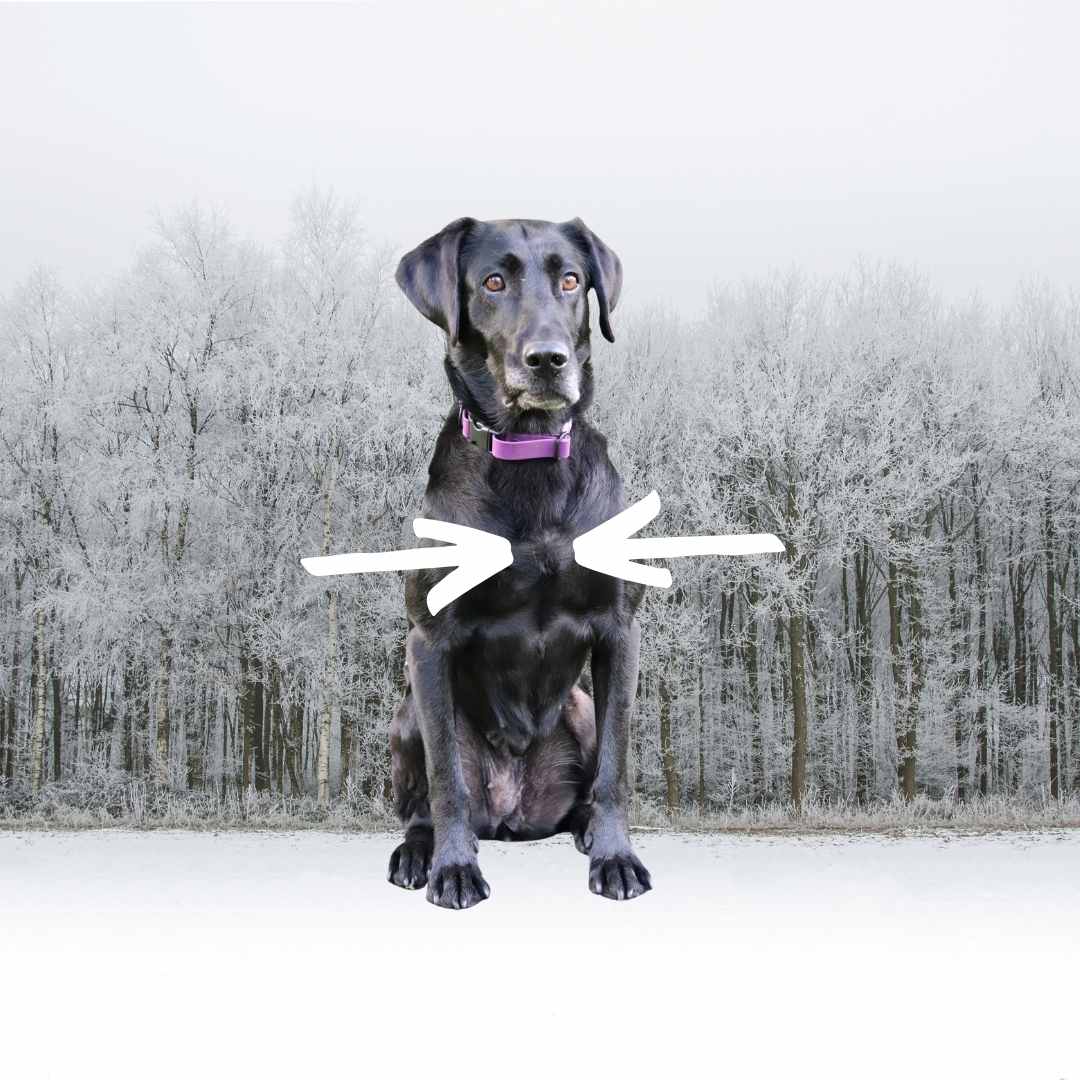
When a harness is fitted correctly, the pulling power is distributed on the bony prosternum and below. Pressure on the bone is safe, and feels fine. But, when the collar of a harness is too small, the pressure of the harness may occur on the dog's trachea. We don't want that.
To judge the fit of your harness, you want to have your dog standing, with pulling pressure on the harness to stimulate the fit when your dog is pulling. The fit will look different if the dog is sitting and when there is no pulling pressure applied.
The harness at this point should be reasonably wide enough to distribute the pressure of pulling well. An overly narrow strap at this point should be avoided. Webbing that is too wide is also problematic, we'll look at that next.
Free Movement of Shoulders
These harnesses should allow unrestricted of your dog's movement at all gaits. This is important for sound movement and avoiding injury.
From the front, you should easily be able to see that your dog's shoulders are free to move forward smoothly. Again, this is best judged while the dog is standing, and with pressure on the harness. The green area here shows unrestricted shoulders.
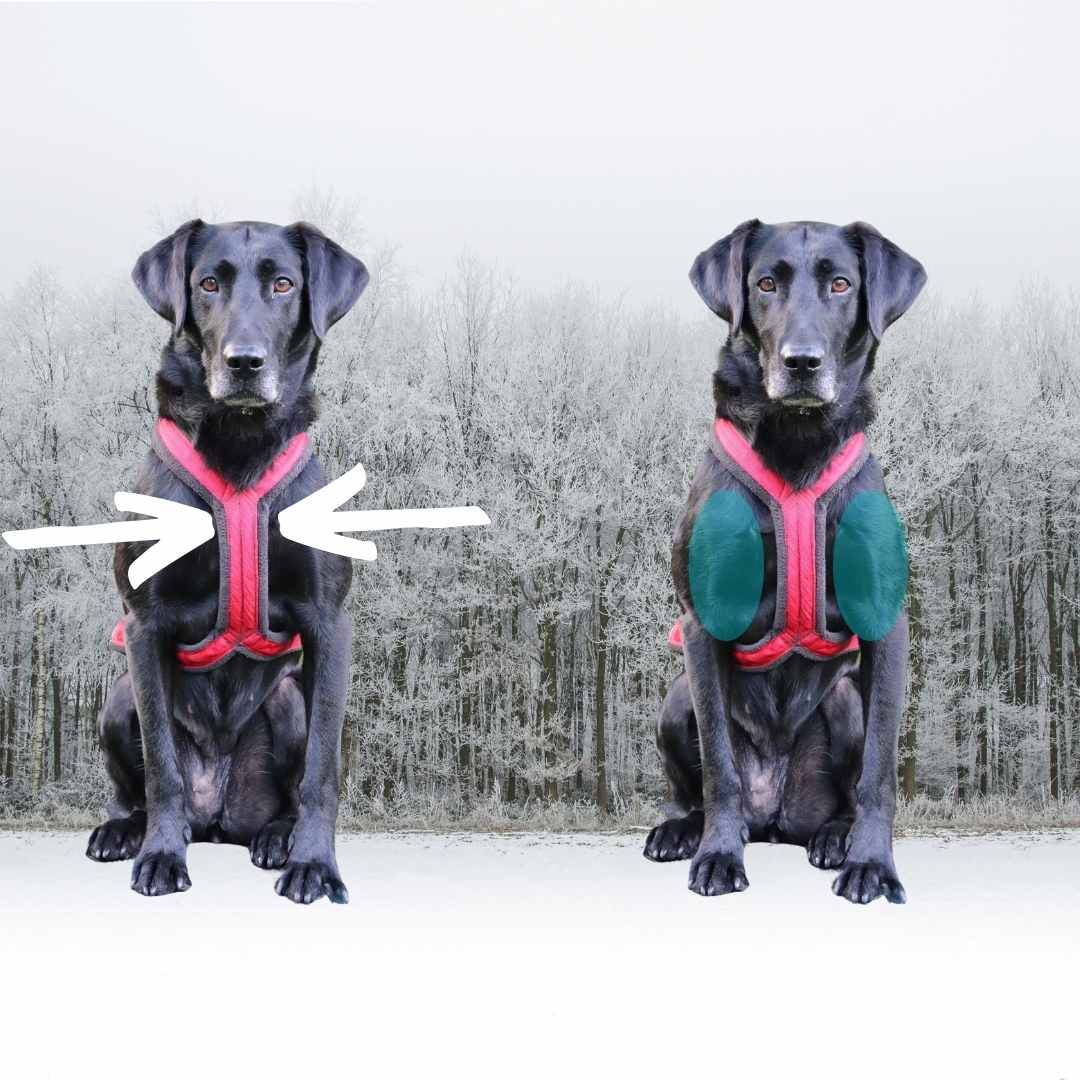
Above: in the sitting position, this harness appears to ride too hide on the dog's prosternum- note the arrows that show the position of the prosternum, and the upper portion of the harness goes upward beyond that. From this angle it does appear to allow for free shoulder movement. The fit will look different, and should be checked, when the dog is actually standing and has some pressure applied on the harness.
Some harnesses can restrict the shoulders by being too wide in the collar area, too big in the collar area, or too wide in the chest plate. There are some harness designs that intentionally go right across the shoulder instead of around the neck- those are definitely not suitable for dog powered sports.
This harness is not a good option for this dog. You can see that it rides too low over her shoulders and would impede the forward motion of her limbs.
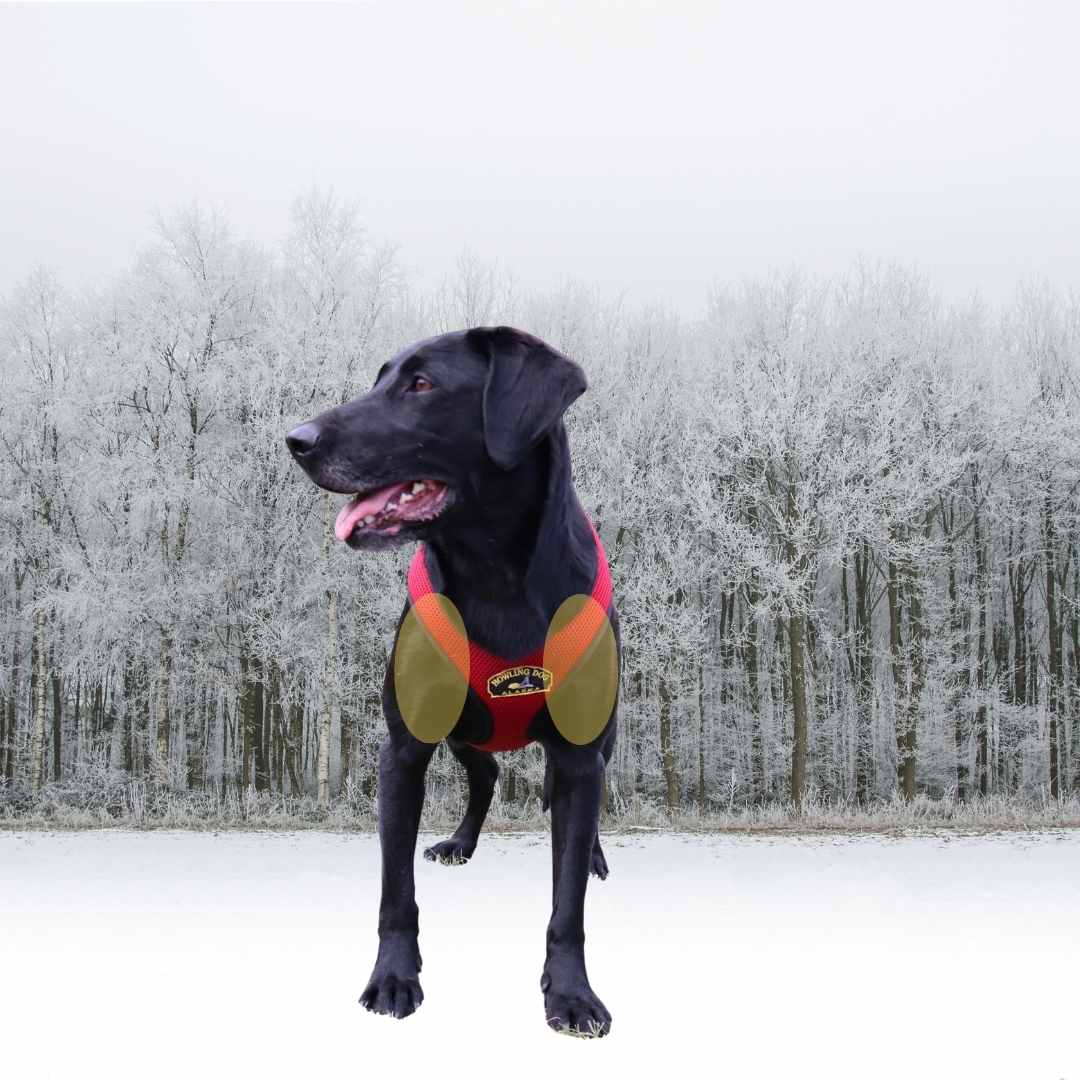
View the dog from the side as well. Again- the harness should be in 'pulling' form- so with the dog leaning into pull on it, or with a helper putting some pressure on the harness from behind. The fit is always judged while the harness is 'working'.
From the side we'll check the shoulder fit, and also the next two things on our list- the support on the ribs of the dog, as well as the free movement of the thighs.
Here is a harness that fits this dog well on all counts. Note the green areas that we are specifically checking.
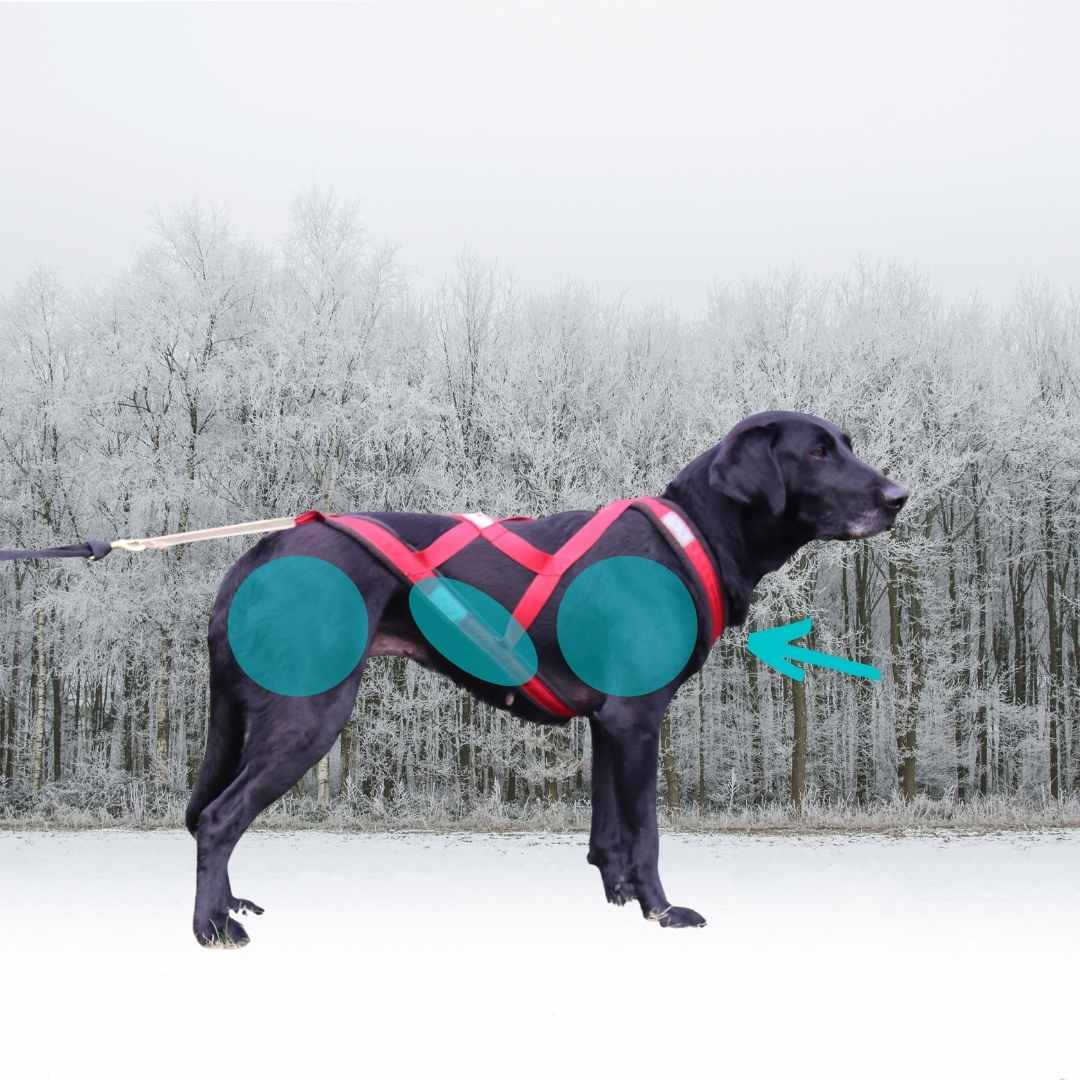
In each of the photos below, yellow zones show areas of incorrect fit, while green zones are fine. You'll want a good fit in ALL regions, on your dog, but you may find that some harnesses only tick a few of the boxes. Experiment with different brands – or you may find some companies that offer custom harness design based on the exact measurements of your dog.
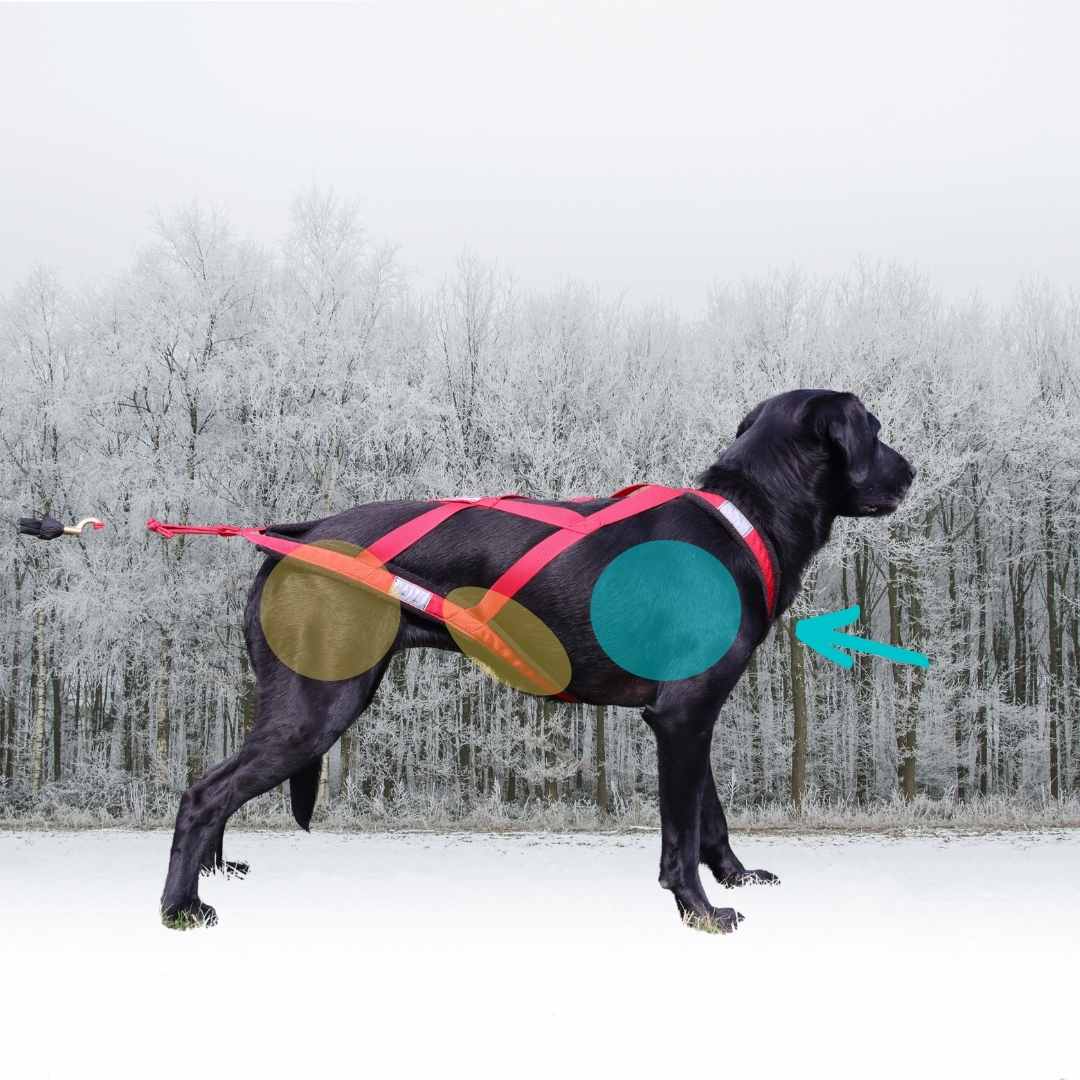
Above: The same brand harness as previously shown, in a size larger. The collar region is still okay on this dog- the pressure point is still on the prosternum, and the shoulders are free from restrictions. But, the under-strap along the edge of the ribcage is definitely too big- it runs under the ribs, and is unsupported. This extra large size also rides low over the dogs thighs and would impede power.
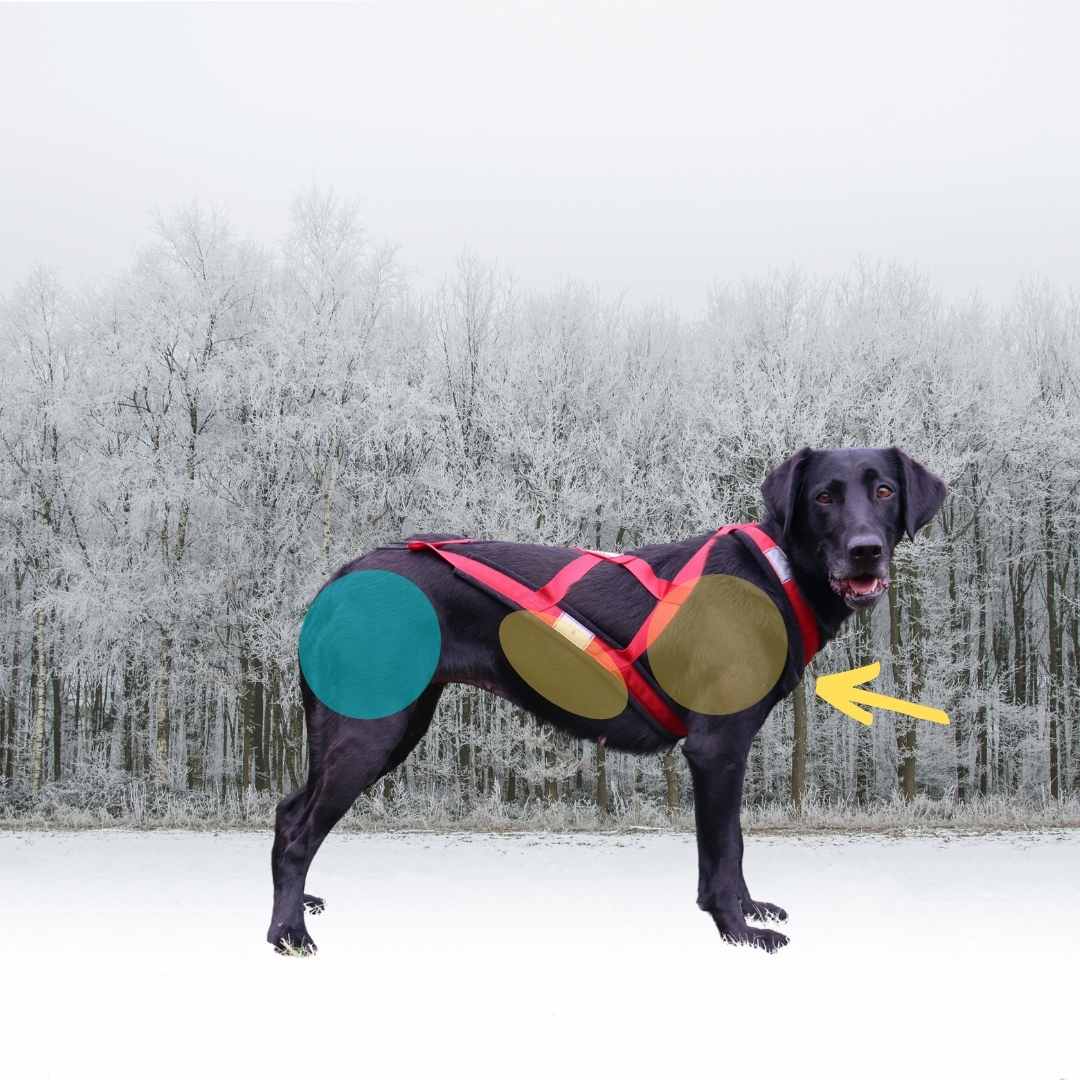
Above: Another harness of the same brand- this time a size too small. Notice that the harness rides above the dog's prosternum, this would press directly on the dog's trachea and make pulling unpleasant and breathing difficult. The tight fit in the ribcage area would also impinge on strong breathing. Notice also how the under portion of the harness is right up in this dog's armpit- this is likely to cause chaffing.
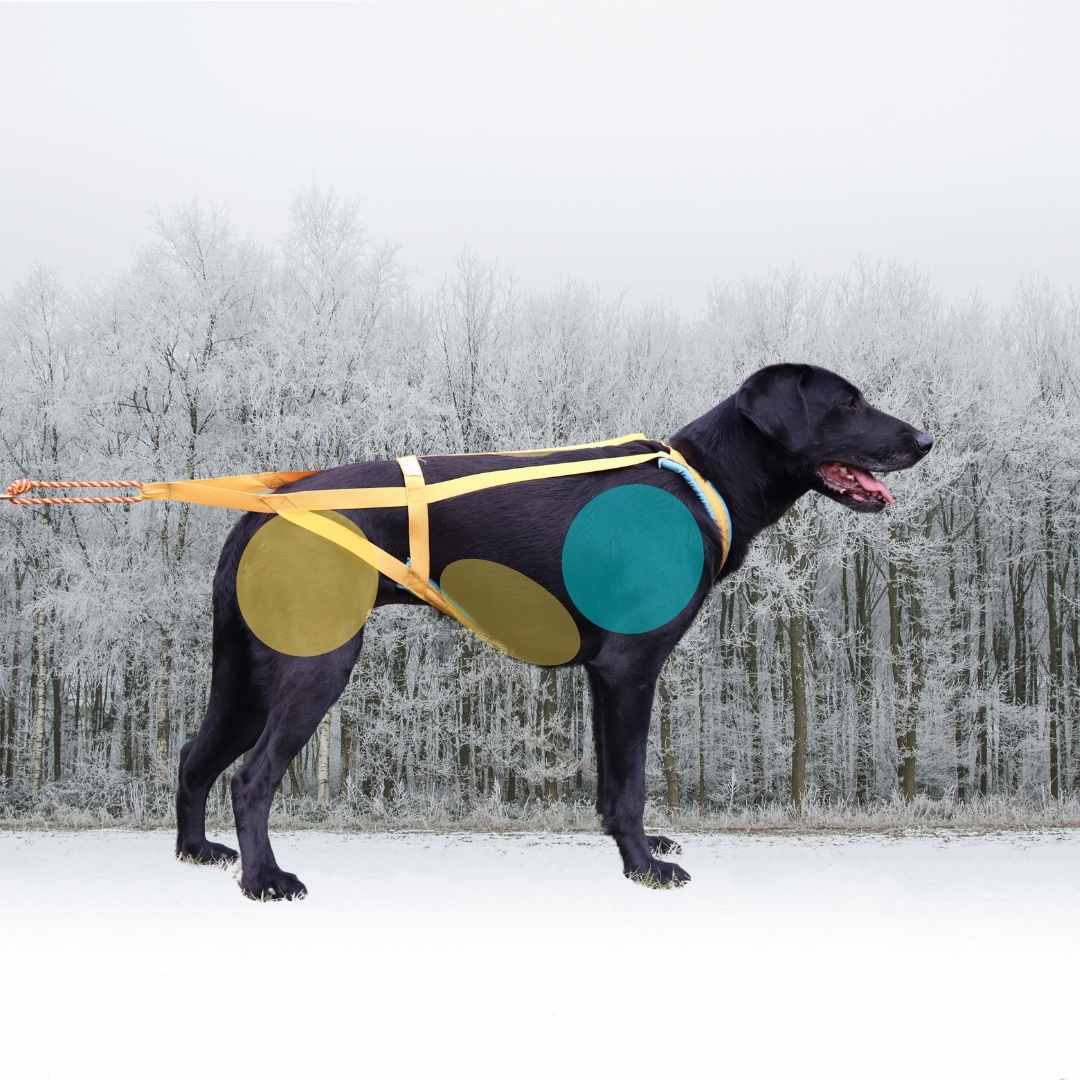
Above: A different style and brand of harness- this is an 'H-back' harness. On this dog, the collar area seems to fit fine, but the harness is much too long for this dog- the harness does not sit on the ribs for support and it rides low over the thigh. This harness might be a better fit for a dog with a narrow neck but deep chest and long body- perhaps more of a greyhound body type?
So there you have it! Check any harness destined for dog powered sport style pulling against these four points and you're sure to find a good fit. Keep in mind that each brand you find will have slightly different proportions so not all brands are going to fit every dog in standard sizes. Custom sizing or switching brands/designs entirely might be necessary if your dog's size or body shape is significantly different from breeds commonly used in dog powered sports.
About the author: Erin Lynes is a Certified Professional Canine Fitness Trainer, a Karen Pryor Academy certified training partner, a CaniFit Certified Leader, and a Licensed Family Dog Mediator residing in Quesnel, BC, Canada. She competes in a variety of sports with her Labrador Retrievers and has a background in sprint style sled dog racing where she won many championship races. Currently, she owns and operates Eromit AIRcademy, a dog training facility, and teaches online dog training classes in a variety of sports for the Fenzi Dog Sports Academy.
Upcoming online training options: An Introduction to Kicksledding: Dashing Through the Snow (starting January 12th): https://calendar.google.com/ca...
 Erin Lynes
Erin Lynes 